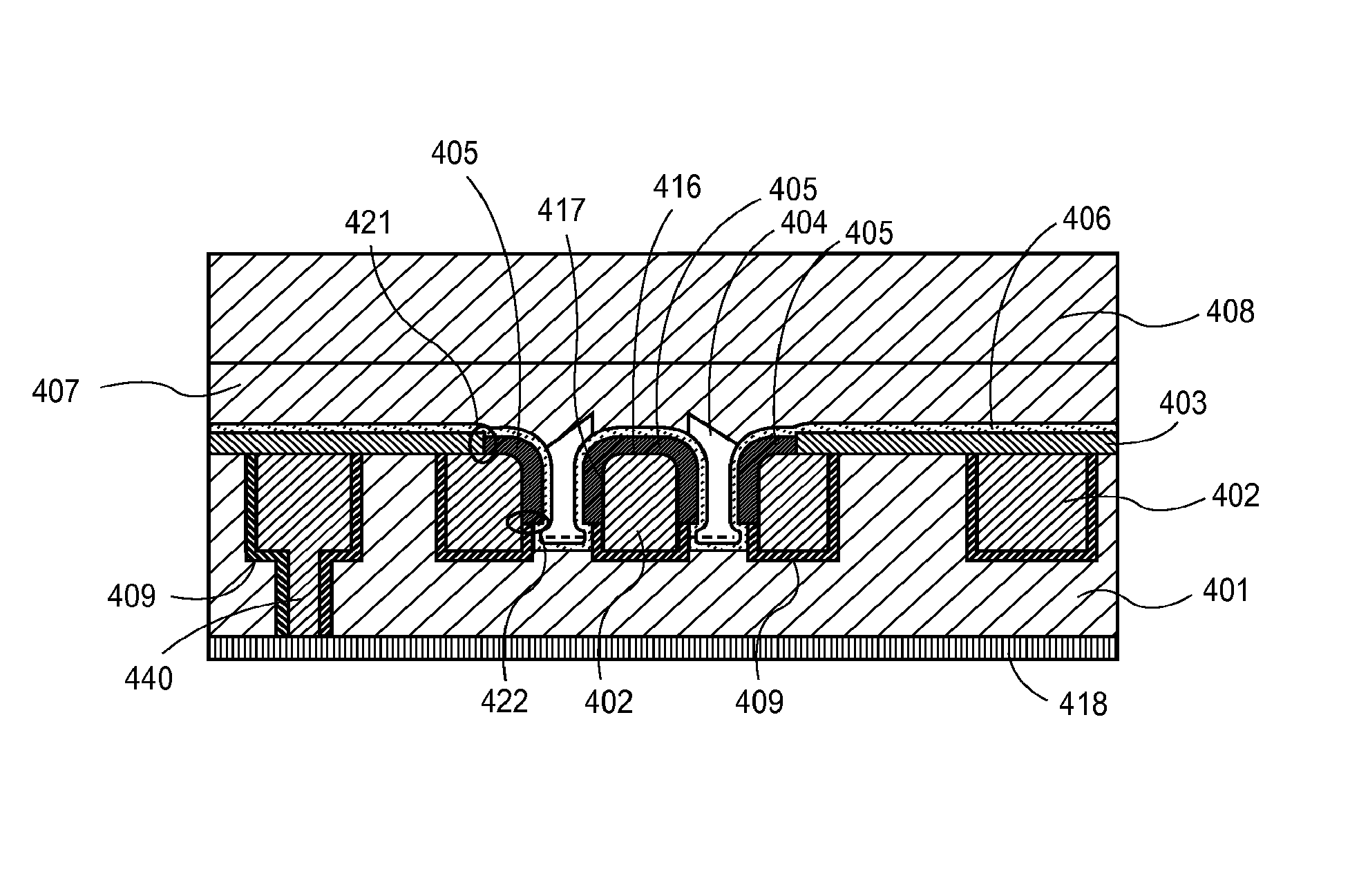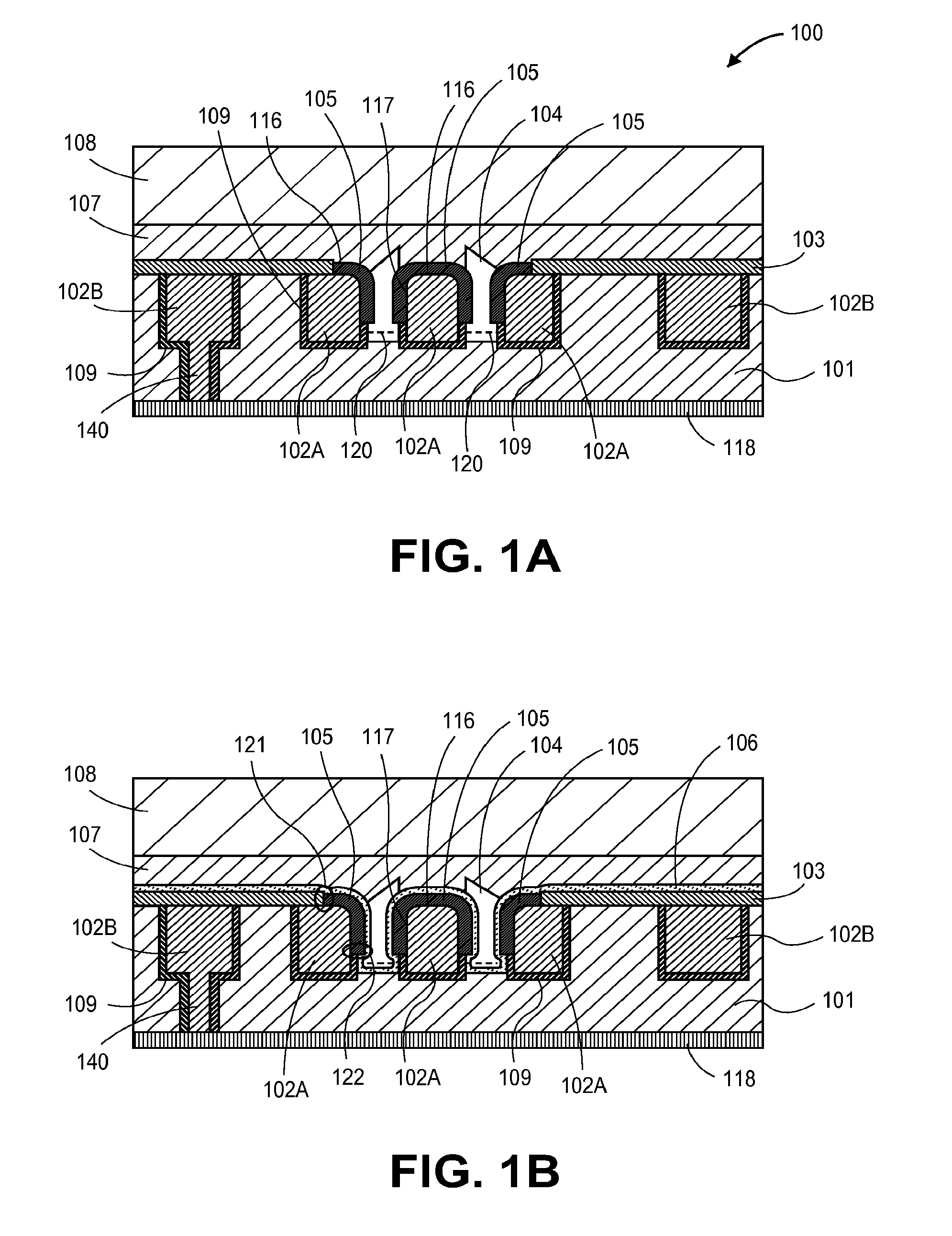Airgap interconnect with hood layer and method of forming
a technology of air gap and hood layer, which is applied in the direction of semiconductor devices, semiconductor/solid-state device details, electrical apparatus, etc., can solve the problems of increasing chip power requirements, interference with signal transmission, and increasing the complexity of integrated circuitry (ic)
- Summary
- Abstract
- Description
- Claims
- Application Information
AI Technical Summary
Benefits of technology
Problems solved by technology
Method used
Image
Examples
Embodiment Construction
[0015]An airgap interconnect structure with a hood layer for use in an integrated circuit and a process for forming such airgap interconnects with hood layer are described. Embodiments of the present invention have been described with respect to specific details in order to provide a thorough understanding of the invention. One of ordinary skill in the art will appreciate that the invention can be practiced without these specific details. In other instances, well known semiconductor processes and equipment have not been described in specific detail in order to not unnecessarily obscure the present invention. Additionally, the various embodiments shown in the figures are illustrative representations and are not necessarily drawn to scale.
[0016]An airgap interconnect structure with a hood layer and methods for forming such airgap interconnects with hood layers are disclosed herein. Interconnect surfaces must be sealed by one or more barrier layers to prevent diffusion of the interconn...
PUM
| Property | Measurement | Unit |
|---|---|---|
| thick | aaaaa | aaaaa |
| dielectric constant | aaaaa | aaaaa |
| thick | aaaaa | aaaaa |
Abstract
Description
Claims
Application Information
 Login to View More
Login to View More - R&D
- Intellectual Property
- Life Sciences
- Materials
- Tech Scout
- Unparalleled Data Quality
- Higher Quality Content
- 60% Fewer Hallucinations
Browse by: Latest US Patents, China's latest patents, Technical Efficacy Thesaurus, Application Domain, Technology Topic, Popular Technical Reports.
© 2025 PatSnap. All rights reserved.Legal|Privacy policy|Modern Slavery Act Transparency Statement|Sitemap|About US| Contact US: help@patsnap.com



